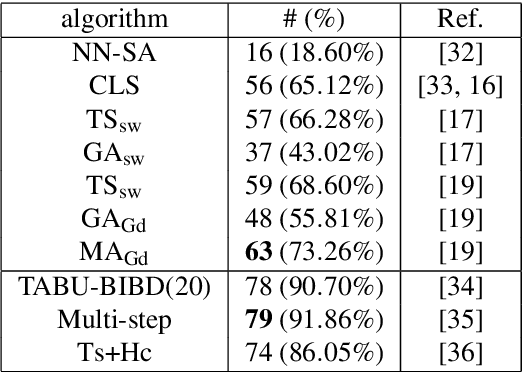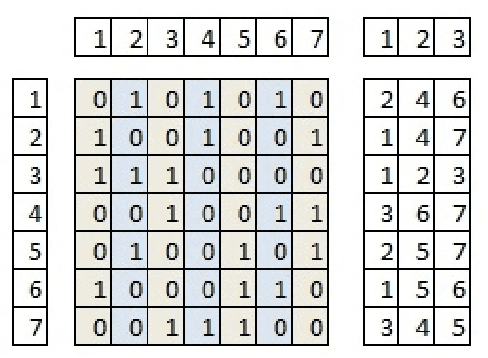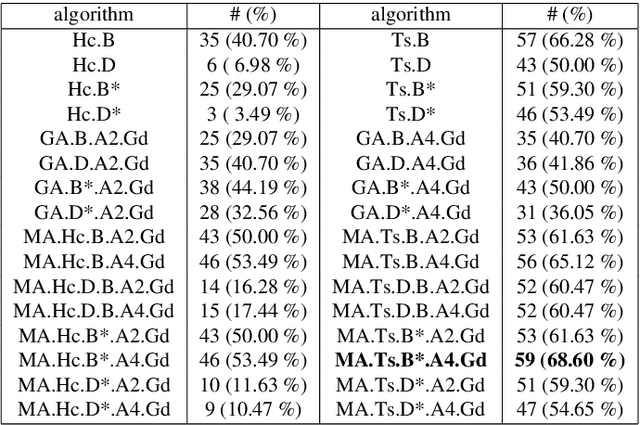David Rodríguez Rueda
Metaheuristics for the Template Design Problem: Encoding, Symmetry and Hybridisation
Nov 05, 2024Abstract:The template design problem (TDP) is a hard combinatorial problem with a high number of symmetries which makes solving it more complicated. A number of techniques have been proposed in the literature to optimise its resolution, ranging from complete methods to stochastic ones. However, although metaheuristics are considered efficient methods that can find enough-quality solutions at a reasonable computational cost, these techniques have not proven to be truly efficient enough to deal with this problem. This paper explores and analyses a wide range of metaheuristics to tackle the problem with the aim of assessing their suitability for finding template designs. We tackle the problem using a wide set of metaheuristics whose implementation is guided by a number of issues such as problem formulation, solution encoding, the symmetrical nature of the problem, and distinct forms of hybridisation. For the TDP, we also propose a slot-based alternative problem formulation (distinct to other slot-based proposals), which represents another option other than the classical variation-based formulation of the problem. An empirical analysis, assessing the performance of all the metaheuristics (i.e., basic, integrative and collaborative algorithms working on different search spaces and with/without symmetry breaking) shows that some of our proposals can be considered the state-of-the-art when they are applied to specific problem instances.
Memetic collaborative approaches for finding balanced incomplete block designs
Nov 04, 2024



Abstract:The balanced incomplete block design (BIBD) problem is a difficult combinatorial problem with a large number of symmetries, which add complexity to its resolution. In this paper, we propose a dual (integer) problem representation that serves as an alternative to the classical binary formulation of the problem. We attack this problem incrementally: firstly, we propose basic algorithms (i.e. local search techniques and genetic algorithms) intended to work separately on the two different search spaces (i.e. binary and integer); secondly, we propose two hybrid schemes: an integrative approach (i.e. a memetic algorithm) and a collaborative model in which the previous methods work in parallel, occasionally exchanging information. Three distinct two-dimensional structures are proposed as communication topology among the algorithms involved in the collaborative model, as well as a number of migration and acceptance criteria for sending and receiving data. An empirical analysis comparing a large number of instances of our schemes (with algorithms possibly working on different search spaces and with/without symmetry breaking methods) shows that some of these algorithms can be considered the state of the art of the metaheuristic methods applied to finding BIBDs. Moreover, our cooperative proposal is a general scheme from which distinct algorithmic variants can be instantiated to handle symmetrical optimisation problems. For this reason, we have also analysed its key parameters, thereby providing general guidelines for the design of efficient/robust cooperative algorithms devised from our proposal.
* 16 pages, 7 figures
 Add to Chrome
Add to Chrome Add to Firefox
Add to Firefox Add to Edge
Add to Edge